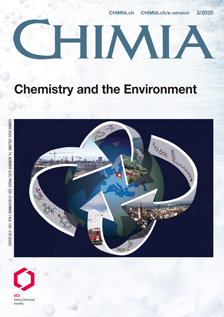When Environmental Chemistry Meets Ecotoxicology: Bioavailability of Inorganic Nanoparticles to Phytoplankton
DOI:
https://doi.org/10.2533/chimia.2020.115PMID:
32197668Keywords:
Bioavailability, Engineered nanoparticles, Nanotoxicology, Phytoplankton, WaterAbstract
The present review critically examines the state-of-the-art of the research concerning the likely environmental implications of engineered nanoparticles (ENPs) with specific emphasis on their interactions with phytoplankton in the aquatic environment. Phytoplankton plays a key role in the global carbon cycle and contributes to the half of the global primary production, thus representing some of the Earth ' s most critical organisms making the life on our planet possible. With examples from our own research and the literature, we illustrate what happens when aquatic organisms are unintentionally exposed to metal-containing ENPs, which are increasingly released into the environment from nano-enabled materials. We highlight the complexity of the ENPs behavior in the aquatic environment and focus on the three key steps of the bioavailability process: exposure availability, uptake availability and toxico-availability. The influence of the phytoplankton on the ENPs fate in the aquatic environment is discussed, too.Downloads
Published
2020-03-25
Issue
Section
Scientific Articles
License
Copyright (c) 2020 Vera I. Slaveykova, Mengting Li, Isabelle A. Worms, Wei Liu

This work is licensed under a Creative Commons Attribution-NonCommercial 4.0 International License.
How to Cite
[1]
V. I. Slaveykova, M. Li, I. A. Worms, W. Liu, Chimia 2020, 74, 115, DOI: 10.2533/chimia.2020.115.







